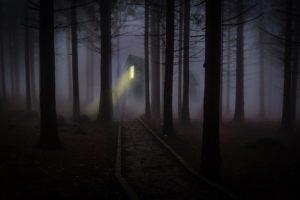Uncategorized
Whose Mystery Is It Anyway?
by
I write mystery novels, but when it comes to figuring out who your readers are, “mystery novel” alone won’t cut it as a designation. Is it a classic mystery in the style of Agatha Christie or a suspense tale ala Mary Higgins Clark? Or maybe it’s more of a noir? It might surprise you to learn that there are more than a dozen subgenres within the broader category of “mystery,” and they each have their own conventions and diehard fans.
One of the conversations I had with my editor about The Vanishing Season concerned the level of gore in the story. It involves a serial killer who likes to cut off people’s hands, so there are some definite icky moments. However, most of the violence occurs “off screen” and there’s no detailed discussion of bloodshed or viscera. The question facing me and my editor was whether to leave in references to the killer’s dastardly deeds or remove them in case they turned readers’ stomachs. The decision would slant my book in one direction or the other: keep the serial killer creepy stuff, and the book sits with dark stories, leaning toward thrillers; or remove any references to a hacksaw and plant the book closer to a traditional mystery. Hmmm…what to do?
If you are aiming for the largest audience, make your book a cozy or a traditional mystery. These are both classic types of mystery that can feature official investigators (ala Columbo) or amateur detectives (ala Jessica Fletcher from Murder She Wrote). The fun of these books is in their characters, their settings, and the puzzle at hand. There is often a murder but it won’t feel too dark because the victim often deserved what was coming to him and the crime itself is not detailed. There are no long passages lamenting man’s inhumanity to man or musing on the darkness of the human heart. Rather, there is more often humor and enjoyment in watching a likable sleuth figure out the twisty solution.
Suspense and thriller books tend to be darker in tone, with an omnipresent sense of foreboding. The main character is in danger from a known or unknown threat. These books often have elements of mystery to them, but in some ways, suspense is the opposite of mystery. Tension in mysteries relies on the reader not knowing the identity of the perpetrator. By contrast, suspense books may even reveal who the Big Baddie is fairly early on, and the tension comes from what next horrible thing will happen to the hero and how he/she will defeat the villain, e.g. Behind Closed Doors. Descriptions of agonizing deaths or other macabre developments are not unusual in suspense/thriller stories.

As you can see, the reader experience varies dramatically between these categories of “mystery,” and if you want one kind and get the other, you may be disappointed. Books have to delivery on reader expectations. Thus, the question for me and my editor boiled down to: what kind of book are readers expecting from The Vanishing Season? Given that the central premise involves serial murder—a killer who hunts for sport—it did not seem like the story would ever fit neatly into the cozy or traditional mystery bin. On the other hand, readers who are drawn to tales of serial killers actually want to hear some of the gruesome details. Watering down the creepy factor too much risks alienating this group.
So…in the end, the minor descriptions of severed body parts stayed in the book. It’s a mystery/thriller at heart, and I hope it delivers as such!

